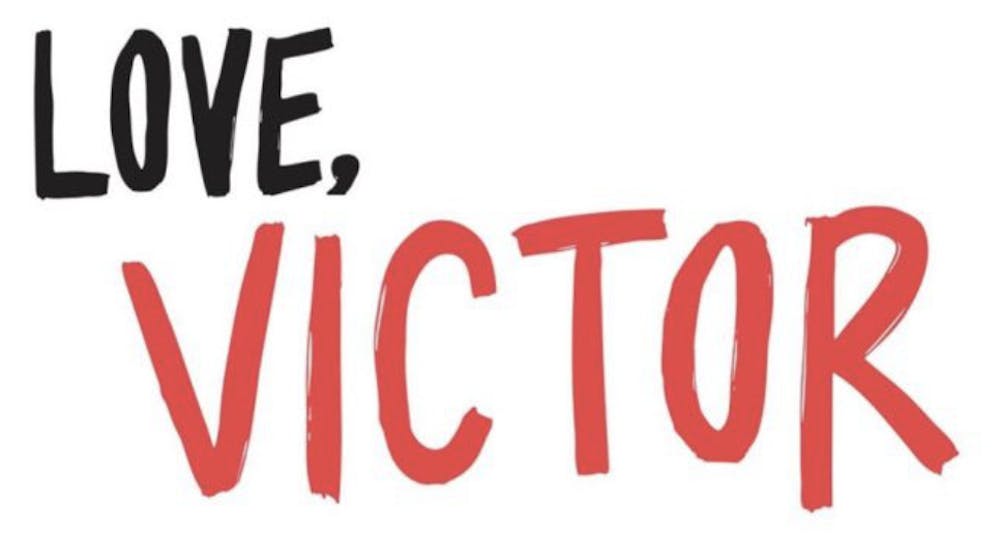Providing a renovation of the queer teen love story Love, Simon from 2018, the newly released TV series Love, Victor takes place in the same setting of Creekwood High School, with new characters and a different story. Victor Salazar, the protagonist of the new show, is a Puerto Rican with a “beautiful cinnamon complexion” from Texas who, despite financial shortcomings, has moved with his family to the more affluent school district of Creekwood High. We quickly learn that Victor sets upon himself the mission to discover his sexuality and, more importantly, who he is.
Compared to its parent film, the coming-out story offers a more difficult reality: Victor has to face this new identity while also being a part of a religious and traditional Latinx family. Although most critics gave harsh reviews, claiming the series has too much “teen angst” or is “pleasantly bland” for a “lackluster” plot, they may have missed the point of the film. The struggles that Victor faces offer a much-needed perspective that diversifies gay television and portrays the complexity of identifying one’s sexuality.
As the oldest of three kids, Victor has always maintained a strong sense of family, which is very important within Latinx culture. Victor’s father is a hard-working, blue-collar man that has started a new job in Atlanta. Although he is shown as the traditional machista father figure prominent in Latinx culture, Armando has a tough relationship with his wife. Their precarious relationship also hurts the rest of the family as Victor and his two siblings try to hold the family together. Given his family dynamics in a new city, Victor’s plans for discovering himself are not as clear-cut as expected.
Beginning at Creekwood High as a sophomore, Victor quickly catches the eye of Mia Brooks, a gorgeous, witty girl who is very popular. On that same day, Victor quickly falls for Benji, a confident, charming guy who is openly gay. Even though he is still trying to determine his sexuality, Victor connects with Mia first, as the two classmates have a perfect personality match that makes their relationship quickly escalate to something serious.
Victor also begins working at a café, where Benji is assistant manager. As Victor forges a serious relationship with Mia, he also gets to know Benji more and more. Spending a lot of time between the two, Victor struggles to determine his sexuality. The series proves to be more than a teen romance, as most of the characters’ own challenges play into Victor’s long-winded journey to finding his true self.
While at work, Benji and Victor have a conversation about their current romantic relationships and past dating lives as they begin to open up to each other. Before coming out, Benji was, like Victor now, confused about who he was and his own sexuality. He jokes, “Turns out human sexuality is less of a straight line, and more of a Cirque du Soleil show.”
Additionally, the strenuous relationships within his own household and being there for his girlfriend, Mia, places a large emotional burden on Victor. The expectations to take care of his family and to be a good, trustworthy boyfriend make it harder for him to find the time to ask himself what he truly wants in life.
Lost in his own identity crisis, Victor slides into the DMs of Creekwood’s past gay icon, Simon Spier, who now studies at New York University with his boyfriend. Simon provides his own coming-out experience, guidance and encouragement to help Victor as he self-reflects. Throughout the series, their friendship grows as Victor finally discovers a safe space where he can express himself before exposing himself. Victor even takes an impromptu bus trip to New York City to visit Simon, which leads to a great epiphany that helps Victor build enough courage to come out.
The connection between the two characters most likely occurs as a quick way to connect both stories together; however, the friendship that is built reinforces a message to the viewer that coming out is never an easy feat and that sharing stories with the people that one trusts makes the process a little less frightening.
Frankly speaking, this series is not going to be your typical sexy, romantic gay teen film. Life as a young, Hispanic kid moving to an entirely new city while determining their sexuality is not a cute love story by any means. Love, Victor represents a raw, messy and confusing coming-out story with a realistic representation of what many people of color must face as members of the LGBTQ community.
As a Puerto Rican bisexual man who still can’t find the words or the confidence to confront even my own family about my sexuality, this series provides a much-needed exposé of what members of the Latinx community must face to be “out and proud.”
So, I’m sorry, Karen, if this show wasn’t the exquisitely gay film that has been largely popularized by white cisgender men. Instead, as the plot thickens and Victor has to help others before himself, Victor finds it increasingly difficult to understand who he intends to be.
Love, Victor paves the way for a greater portrayal of the exuberant diversity within the LGBTQ community in popular film and media. In short, especially now with many stuck at home, this series is best described as binge-worthy.





